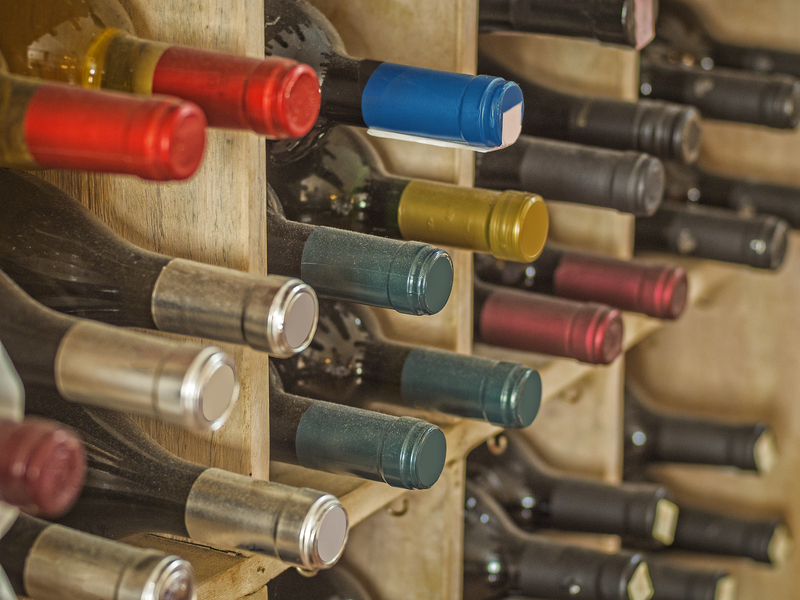Introduction to Pot and Pan Disposal and Recycling
Disposing of old pots and pans can present a unique challenge. Unlike common household items, cookware often contains a mix of materials such as metals, coatings, or even plastics. With sustainability and environmental responsibility on the rise, finding the best ways to get rid of your old pots and pans is no longer just about clearing out your kitchen--it's about making the right impact. This comprehensive guide will walk you through the top methods for pot and pan disposal, including recycling cookware, eco-friendly donation, creative upcycling, and the ins-and-outs of responsible waste management.

Why Is Responsible Pot and Pan Disposal Important?
Before throwing your old cookware in the trash, it's essential to understand why pot and pan recycling and disposal matters. Most pots and pans are made from metals like aluminum, stainless steel, or copper--materials that can take hundreds of years to decompose in a landfill. Moreover, many pans have non-stick coatings or synthetic handles, complicating the waste process further.
- Environmental Impact: Discarded cookware can contribute to overflowing landfills and pollution unless recycled properly.
- Resource Recovery: Metal pans are rich in materials that can be recovered and reused.
- Community Value: Donating gently used items ensures your old pots and pans stay out of the waste stream and help those in need.
By navigating the best disposal and recycling options for pots and pans, you'll not only declutter your home but also do your part for the environment.
What Materials Are Pots and Pans Made Of?
Understanding the materials your cookware is made from will help you choose the best disposal and recycling route.
- Stainless Steel: Durable, corrosion-resistant, and highly recyclable.
- Aluminum: Lightweight and valuable in the recycling stream.
- Copper: Less common, but extremely recyclable and sometimes valuable in scrap yards.
- Cast Iron: Heavy, rust-prone, but usually accepted at metal recycling facilities.
- Nonstick-Coated (Teflon or Ceramic): More challenging to recycle due to coatings.
- Enamel-Coated: Metal base with a glass-like surface that may require special handling.
*Note: Handles and lids may also include plastic, wood, or glass. These materials affect how to dispose of pots and pans safely and effectively.*
Assessing the Condition: Can Your Pots and Pans Have a Second Life?
Before leaping straight to disposal or recycling, consider whether your cookware can be donated, repurposed, or repaired.
- If it's still functional (not chipped, burned, or heavily stained), donation can give it a new home.
- Minor damages (scratches or lost lids) might be repairable or ideal for upcycling crafts.
- No longer safe for food? These can often be recycled or used for non-cooking tasks.
Local Donation Centers and Charities That Accept Cookware
Numerous organizations accept used pots and pans, provided they are in usable condition.
- Goodwill and Salvation Army: Check your local branch for cookware donation acceptance.
- Homeless Shelters and Soup Kitchens: Many are in persistent need of kitchen equipment.
- Community Centers or Local Churches: Sometimes distribute cookware to families in need.
- Online Marketplaces: Platforms like Freecycle, Craigslist, or Facebook Marketplace, where you can give away old pots and pans.
*Always ensure pots and pans are thoroughly cleaned before donating. Nonstick pans should not be chipped or scratched, as damaged coatings can be unsafe.*
Navigating Cookware Recycling: What Are Your Options?
If donation isn't practical, recycling old pots and pans is the next best eco-conscious option. Here's how to recycle depending on what they're made of:
Scrap Metal Yards
Most metal cookware qualifies as scrap metal. Scrap yards welcome stainless steel, aluminum, cast iron, and even copper pans. Separate metals, remove non-metal parts (like plastic handles), and check with local scrap dealers about what they'll accept. Some may pay for metals like copper and aluminum!
- Tip: Remove any non-metal or composite handles for higher scrap value.
- Best for: Stainless steel, cast iron, aluminum, uncoated metal pans.
Municipal Curbside Recycling Programs
Some municipalities allow metal pots and pans in curbside bins, but many do not due to size or coating concerns. Check your local recycling guidelines online or contact your city's recycling office.
- Best for: Clean, uncoated pots and pans (e.g., all metal, no nonstick or enamel coatings).
- Caution: Never include nonstick-coated, enamel, or composite cookware unless specifically allowed.
Retail Take-Back Initiatives
Some major retailers and cookware brands offer take-back programs, where you can bring in your old pots and pans for recycling when you purchase new ones.
- Example: Stores like Williams Sonoma, Sur La Table, or even certain home improvement retailers may periodically run recycling drives.
- Best for: New pan purchases, brand-specific recycling.
Eco-Friendly Ways to Repurpose Pots and Pans
Creating a second life for your old kitchenware can be fun and environmentally savvy. Here are some creative ideas:
- Planters: Turn deep pots or pans into flower pots for your home or garden.
- Storage: Use pans as containers for tools, office supplies, or kids' art materials.
- Wall Art: Arrange colorful pans or classic cast iron skillets as vintage kitchen wall decor.
- Bird Baths or Feeders: Large, shallow pans can be converted into outdoor bird baths or feeders.
- Candle Molds or Fire Pans: Metal pans are excellent for homemade candles or outdoor fire safety beds.
The possibilities for upcycling old pots and pans are limited only by your imagination!
How to Prepare Pots and Pans for Disposal or Recycling
Proper preparation ensures better recycling, repurposing, or donation outcomes:
- Clean Thoroughly: Scrub away food residues and oils.
- Disassemble If Possible: Remove plastic, wood, or silicone parts.
- Sort by Material: Group stainless steel, iron, aluminum, and copper separately.
- Inspect for Identification Codes: Some cookware includes recycling symbols or grade stamps.
*Proper pot and pan disposal preparation helps both recycling facilities and donation centers process your items efficiently and safely.*
What About Nonstick, Ceramic, or Specialty Coated Pans?
Nonstick or coated cookware poses an extra challenge for pot and pan recycling because the synthetic surface must be removed before the underlying metal can be processed.
- Chipped/Damaged Nonstick Pans: Do not donate. These should go to landfill unless your local scrap yard can strip the coating.
- Enamel-Coated or Ceramic-Coated Pans: Check with your municipality or scrap dealer; some accept these, but many do not.
- Alternative: Use as planters or for non-food uses if they're still structurally sound.
*Always confirm with recycling centers and donation facilities regarding their policies on nonstick cookware disposal.*
Handling Glass Lids and Plastic Handles
Handles and lids often use composite materials that should be separated before recycling:
- Glass Lids: Tempered glass is generally not accepted in regular glass recycling but might be accepted at specialized facilities.
- Plastic or Wooden Handles: Remove these for metal recycling. Some handles can be recycled with household plastics if marked with identification codes.
*Proper separation increases your odds of successful, eco-friendly recycling of pots and pans.*
List of Quick Tips for Sustainable Cookware Disposal
- Call First: Always contact donation centers, recyclers, or scrap yards before bringing items.
- Clean and Separate: Make sure pans are clean and free from attachments for higher scrap value.
- Never Dispose Illegally: Dumping cookware in forests, rivers, or empty lots is hazardous and illegal.
- Find a Retail Take-Back: Check if stores nearby hold recycling events or trade-in programs.
- Document for Community: Share your recycled or upcycled cookware projects online to inspire others!

Frequently Asked Questions About Pot and Pan Disposal & Recycling
Can I throw away pots and pans in the garbage?
You can, but it's not recommended unless you have already tried recycling, donating, or repurposing. Most cookware is made from recyclable or reusable materials, so sending them to landfill should be your last resort.
Are old Teflon pans recyclable?
Generally, nonstick cookware is not accepted in local recycling programs because the coating complicates processing. Check with your scrap metal dealer--some have equipment to safely remove coatings.
Who recycles pots and pans near me?
Search online for "scrap metal recycling" or "household metal recycling centers" nearby. Most cities also list facilities on their municipal waste management websites.
Are there creative things I can do with old pots and pans?
Absolutely! Repurpose into planters, bird feeders, household storage, decorative wall pieces, or even quirky clocks.
Do donation centers accept all types of cookware?
Donation centers typically accept only clean, undamaged cookware. Nonstick pans must be free from chips and heavy scratches. Always call first!
Conclusion: Making Pot and Pan Disposal Eco-Effective
Navigating pot and pan disposal and recycling doesn't have to be overwhelming or wasteful. With a little effort, you can ensure that your old cookware finds a new use--whether by helping someone in need, supporting sustainable recycling streams, or through creative upcycling. Remember to always check local guidelines, separate materials, and handle coatings with care. By handling your old pots and pans responsibly, you contribute to a cleaner environment and a more resourceful, mindful community.
Next time you update your kitchen, you'll know exactly how to dispose, donate, or recycle your pots and pans the right way!
